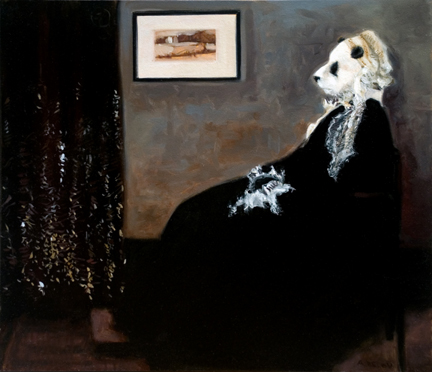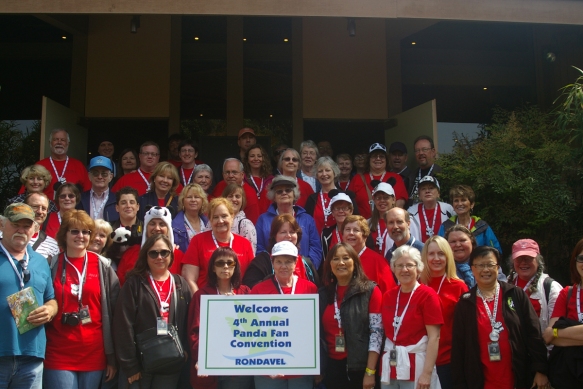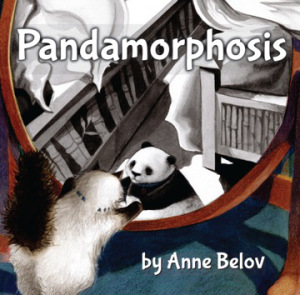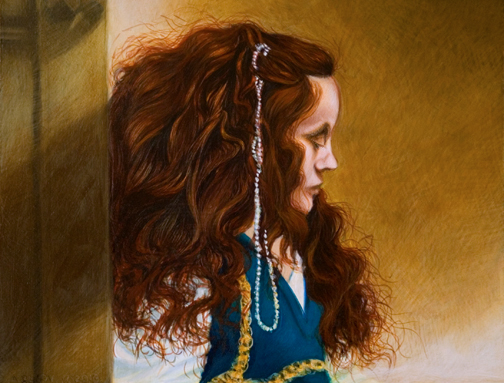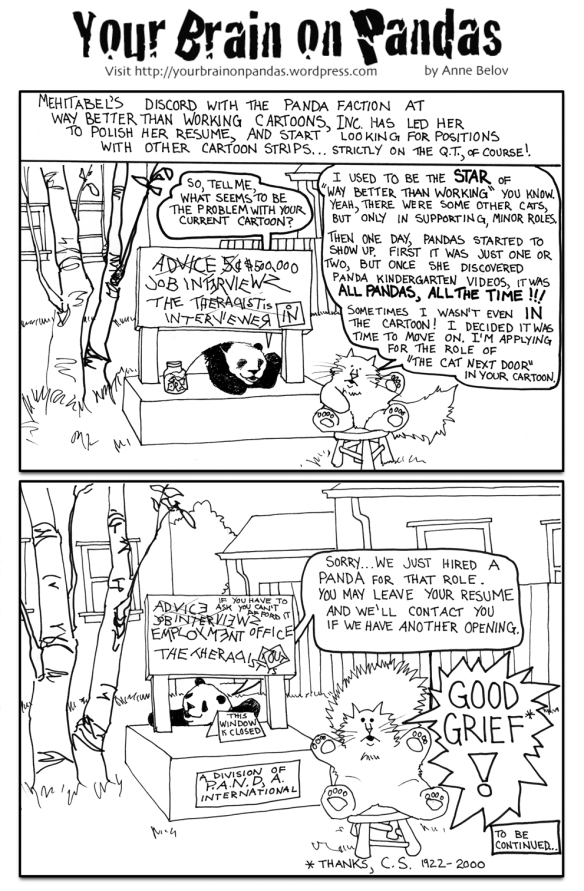Elephant in the Room? What? Where? Oh, that Elephant
In the interest of full disclosure, I must point out that I never thought about marketing in terms of the ethics involved. When I think about marketing my books to an unsuspecting public, the thing that leaps to the front of my mind is the “ick factor.”
Writing and cartooning are recent additions to my creative work. I’ve been painting more years than I care to remember, and it’s been my “day job” for the last 25 years. Almost seven years ago, pandas knocked on the door, demanded entry, put their feet up on the coffee table, and insisted that I write stories, draw cartoons, and perpetrate blasphemous adaptations of Sargent and Whistler paintings, all starring pandas.
They were really most insistent.
Selling paintings is mostly, although not entirely, different than selling books. I’d have to sell hundreds, if not thousands of books to equal the sale of one decent painting. And so marketing raises it’s (often) not so lovely head.
A recent post by Jane Steen got me thinking about the ethics of self publishing in general and about marketing my work in particular. I am, to say the very least, a reluctant marketer. By following a number of blogs about both the art and the business side of writing, it led me to realize that I was going to have to make peace with marketing, like it or not.
My cartoons appeared on my blog, The Panda Chronicles for almost four years before I published The Panda Chronicles Book 1: Your Brain on Pandas. My method for getting the word out was intuitive and organic. When I started my blog, I finally dove in to Facebook, and sought out panda fans, to see if they thought my panda-centric humor was funny, or whether they would chase me through town with pitchforks and burning torches, tar and feathers at the ready. (They liked them! Huzzah!)
I shared my cartoons freely and my fan base grew. I got an unanticipated bonus by reaching out to people on an individual basis because fans became connections and some friendships (real ones) have grown as a result of this, with meetings and gatherings of panda fans in real life.
To be honest, this is a rather time consuming way of selling books. But I am a glutton for connections, maybe because I spend so much of my day holed up in my studio painting and drawing. When I look at the alternatives: auto tweets, constant buy my book/services links, guest posts which are barely disguised infomercials, I realize that the ick-factor detector is a pretty good ethical guide.
I think we must continually ask ourselves how we respond to marketing appeals by others as we try to figure out how to sell our work. Everyone has different threshold levels of what is offensive or annoying, but if it offends me, why would I do it? I’m still trying to figure it all out, and if I listen to my gut and avoid doing things that make me uncomfortable in the marketing of others, I think I am on the right track.
The sands that publishing is built on are shifting. As more people publish their work independently, we have to figure out how to be ethical, not only in the actual writing, but in how we tell the world about it. We are all on our own, trying to figure out just how we going to continue paying the mortgage, but we are also in it together.
My practice of making connections has served me well, in personal satisfaction and real bridges built, if not yet in monetary terms. My followers number in the hundreds, rather than the tens of thousands, but they are real names, some even come with faces attached. I have decided to trust that what feels like the right path both artistically and ethically.
What do you think?
You can see more pandas (for free!) at The Panda Chronicles. You can also…um…find out where to buy my books there.


